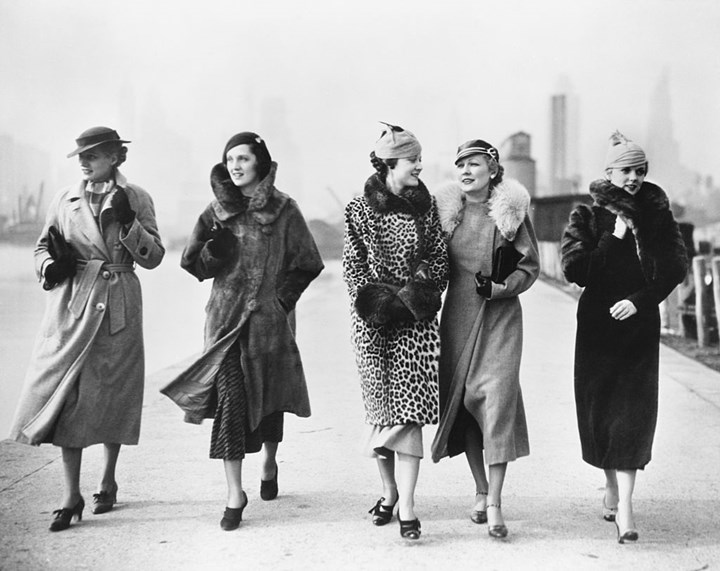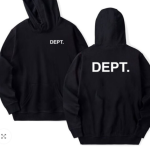Introduction: The Influence of Wall Street Fashion
In the fast-paced world of finance, where numbers, deals, and strategies dominate, there is an often overlooked yet undeniable force at play: fashion. Wall Street, the epicenter of global finance, is not just about numbers and profits. It is also a breeding ground for unique and evolving fashion trends that reflect the changing times and the personalities of those who shape the industry.
Wall Street fashion has come a long way from the traditional, conservative attire that was once synonymous with the financial world. Today, it represents a fusion of classic and contemporary styles, showcasing individuality and self-expression within the bounds of professionalism. As fashion on Wall Street evolves, it not only reflects the shifting cultural and societal norms but also plays a significant role in personal branding, networking, and influencing success.
In this article, we delve into the intriguing realm of Wall Street fashion, exploring its historical evolution, the power of personal style, iconic fashion figures, the intersection of fashion and technology, sustainable practices, and much more. Join us as we unravel the captivating world where style and success converge on Wall Street.
The Evolution of Wall Street Fashion
Wall Street fashion has experienced a remarkable evolution over the years, transitioning from a strict adherence to traditional dress codes to a more flexible and expressive approach. In the early days of Wall Street, professionals were expected to wear formal suits, often with pinstripes and conservative colors, projecting an image of authority and respectability.
However, as societal norms and cultural shifts began to influence fashion trends, Wall Street fashion started to embrace elements of individuality and personal style. The 1980s witnessed a departure from the traditional business attire, with the introduction of power suits characterized by bold colors, shoulder pads, and wide lapels.
In recent years, the fashion landscape on Wall Street has further evolved, embracing a more casual and contemporary approach. Many firms have adopted business casual dress codes, allowing professionals to incorporate a touch of personal style into their attire while still maintaining a professional image.
This evolution in Wall Street fashion reflects a broader shift in the industry’s mindset, acknowledging the importance of individuality, diversity, and a more relaxed work environment. As the financial world continues to adapt to changing times, Wall Street fashion will undoubtedly continue to evolve, reflecting the dynamic and ever-changing nature of the industry.
Dress Codes: From Traditional to Contemporary
Dress codes on Wall Street have undergone a significant transformation, moving away from the strict adherence to traditional and formal attire toward a more contemporary and flexible approach. The traditional dress code on Wall Street was rooted in a conservative mindset, emphasizing professionalism and conformity. Men were expected to wear tailored suits, shirts, ties, and polished dress shoes, while women were often required to wear skirt suits or pant suits with closed-toe shoes.
In recent years, there has been a noticeable shift toward more relaxed dress codes. Many financial firms have embraced a business casual approach, allowing professionals to dress in a manner that reflects their personal style while maintaining a level of professionalism. This change has been influenced by various factors, including the desire to create a more inclusive and diverse work environment, as well as the recognition that clothing does not necessarily determine one’s competence or dedication to their work.
The contemporary dress codes on Wall Street now encompass a wider range of options, including tailored separates, smart casual attire, and even casual Fridays. This shift has been met with mixed reactions, with proponents highlighting the benefits of increased comfort and self-expression, while critics argue that it may blur the line between professional and casual, potentially impacting the perceived seriousness of the financial industry.
As the fashion landscape continues to evolve, it is essential for professionals on Wall Street to strike a balance between expressing their personal style and adhering to the expectations of their workplace. Dress codes may vary depending on the specific company culture, the nature of the job, and the industry sector within finance. Ultimately, the key is to maintain a level of professionalism while adapting to the changing norms of Wall Street fashion.
Power Dressing: The Psychology of Success
Power dressing is a concept that has long been associated with Wall Street fashion. It goes beyond merely choosing stylish and well-fitted clothing; it encompasses the psychology of success and the impact of attire on one’s confidence, presence, and professional image.
When professionals on Wall Street dress in a manner that exudes confidence and authority, it not only influences how they are perceived by others but also boosts their own self-assurance. Power dressing often involves wearing tailored suits, crisp shirts, polished shoes, and accessories that convey professionalism and attention to detail. These choices signal a sense of competence, credibility, and ambition, which are highly valued in the finance industry.
Research has shown that clothing can affect a person’s cognitive processes, emotional state, and behavior. Dressing in a powerful and polished manner can enhance one’s own confidence, leading to improved performance and better decision-making in high-pressure situations.
Furthermore, power dressing also plays a role in how individuals are perceived by their peers, clients, and superiors. A well-dressed professional is more likely to be seen as competent, trustworthy, and capable of handling important responsibilities. This perception can open doors to networking opportunities, career advancement, and successful interactions within the industry.
While power dressing remains relevant on Wall Street, it is essential to strike a balance between projecting authority and embracing personal style. Professionals are increasingly encouraged to incorporate elements of their individuality into their attire, allowing them to express their personality while maintaining a professional image.
In conclusion, power dressing on Wall Street is more than just a fashion statement; it is a psychological tool that can enhance confidence, influence perceptions, and contribute to professional success. Understanding the psychology behind power dressing can empower individuals to make intentional and strategic choices about their attire, ultimately shaping their path to success in the competitive world of finance.
Conclusion
The world of Wall Street fashion is a fascinating intersection of style and success. Over the years, it has evolved from a strict adherence to traditional dress codes to a more flexible and contemporary approach. The influence of fashion on Wall Street goes beyond mere aesthetics; it carries psychological implications and plays a significant role in personal branding, networking, and professional success.
From power dressing to the expression of personal style, professionals on Wall Street use fashion as a tool to project confidence, authority, and competence. The evolution of dress codes reflects the changing times and cultural shifts, embracing individuality and diversity while maintaining professionalism.
Fashion icons on Wall Street have emerged, leaving their mark on the industry and inspiring others to express their unique style. The influence of social media and technology has further amplified the impact of fashion in the finance world, creating new opportunities for personal branding and networking.
As the fashion landscape on Wall Street continues to evolve, sustainability and ethical fashion practices have gained traction, aligning with the industry’s growing focus on responsible investing and conscious consumption.
In summary, Wall Street fashion is a dynamic and ever-changing realm that reflects the values, trends, and aspirations of the financial industry. By understanding the power of fashion and embracing it strategically, professionals can navigate the world of finance with style and confidence, setting themselves apart in an industry known for its high standards and expectations.
If you are interesting fashion information,please visit FashionBridal.us





